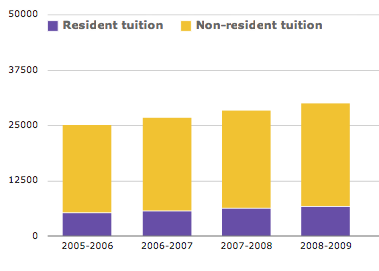For my interview I decided to interview someone who is experiences the problems of non-resident tuition. I interviewed Ashley Yehoda, a dance major from Pennsylvania. I found it interesting that for the most part we agreed with the ideas of how tuition is being distributed. However there were some ways that we did not agree. I feel that in those moments that we did not agree was because she was non informed of the research that I was informed of.
Questions:
Do you feel that charging out-of-state students higher education necessary?
Would you say that out-of-state tuition hinders student from getting the kind of education that they truly desire?
Do you think that it is fair for public universities to consider themselves state institutions when a good amount of students are not from the state?
Would you think that it is fair to have equal tuition for both in-state and out-of-state students?
Answers:
1. I don't think higher tuition should be necessary for out of state students. We are receiving the same education as the in state students and we shouldn't have to essentially make up the difference of state taxes for a state we don't even live in.
2. It doesn't hinder the education we receive but it definitely discourages out of state people from wanting to come here.
3. If the university is at least partially funded by state taxes it can be considered a state university. At the same time though, if most of the university is attended by out of state students, it's unfair for there to be a difference in tuition.
4. Most definitely
